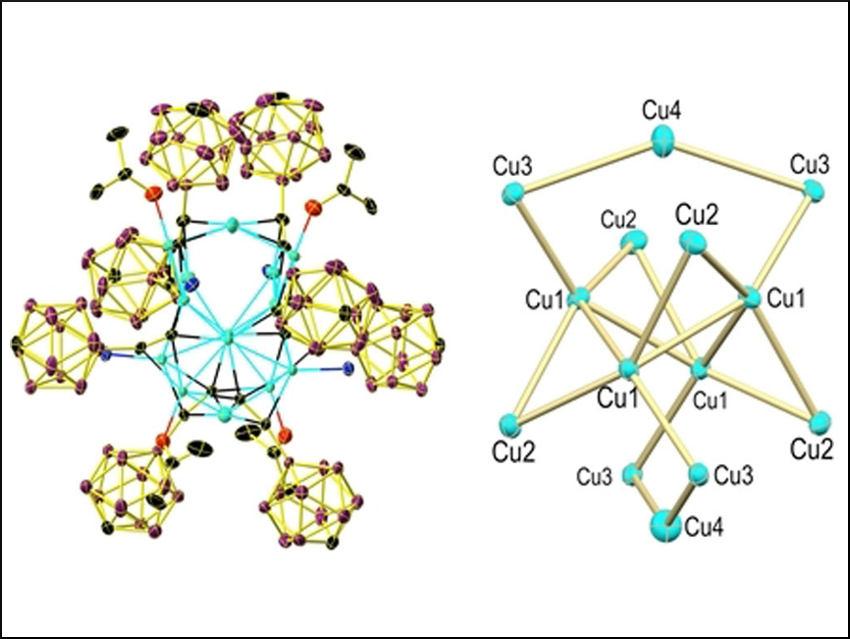Metal–alkyne complexes play a central role in organometallic chemistry. Copper acetylides, for example, are important because of their structural variety and their role as key intermediates in catalytic C–C bond forming reactions. They often show solid-state luminescence, which has enabled the development of luminescent materials. However, the preparation of such complexes with tunable structural and optical properties is still challenging.
Simon Duttwyler, Zhejiang University, China, Nathaniel Finney, Tianjin University, China, Bernhard Spingler, University of Zurich, Switzerland, and colleagues have combined copper(I) with a monocarborane alkyne ([CB11H11‐12‐C≡CH]−) to form a versatile polynuclear intermediate. The addition of different phosphine and pyridine ligands can transform this intermediate to a range of homometallic products with two to ten Cu(I) centers (example pictured left, corresponding copper core on the right). All of the products have been studied by X-ray crystallography.
The products have a surprising structural variety. They also show room-temperature phosphorescence in the solid state. Emission across the visible spectrum from blue to red and quantum yields up to Φ = 0.99 are observed. This work establishes a new class of luminescent complexes and allows further optimization by ligand design.
- Atomically Defined Monocarborane Copper(I) Acetylides with Structural and Luminescence Properties Tuned by Ligand Sterics,
Kang Zhang, Yunjun Shen, Xiaoli Yang, Jiyong Liu, Tao Jiang, Nathaniel Finney, Bernhard Spingler, Simon Duttwyler,
Chem. Eur. J. 2019.
https://doi.org/10.1002/chem.201900584




